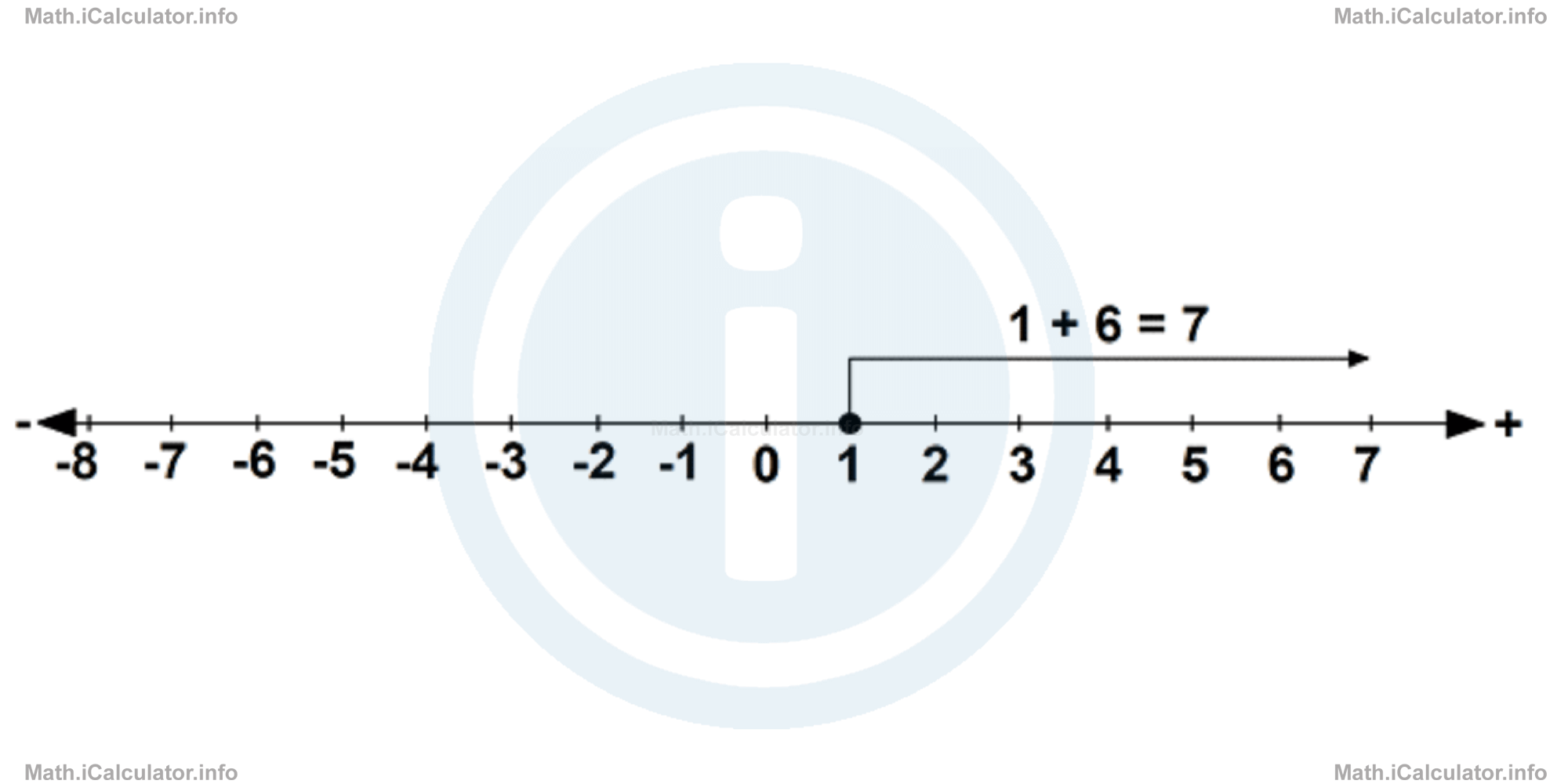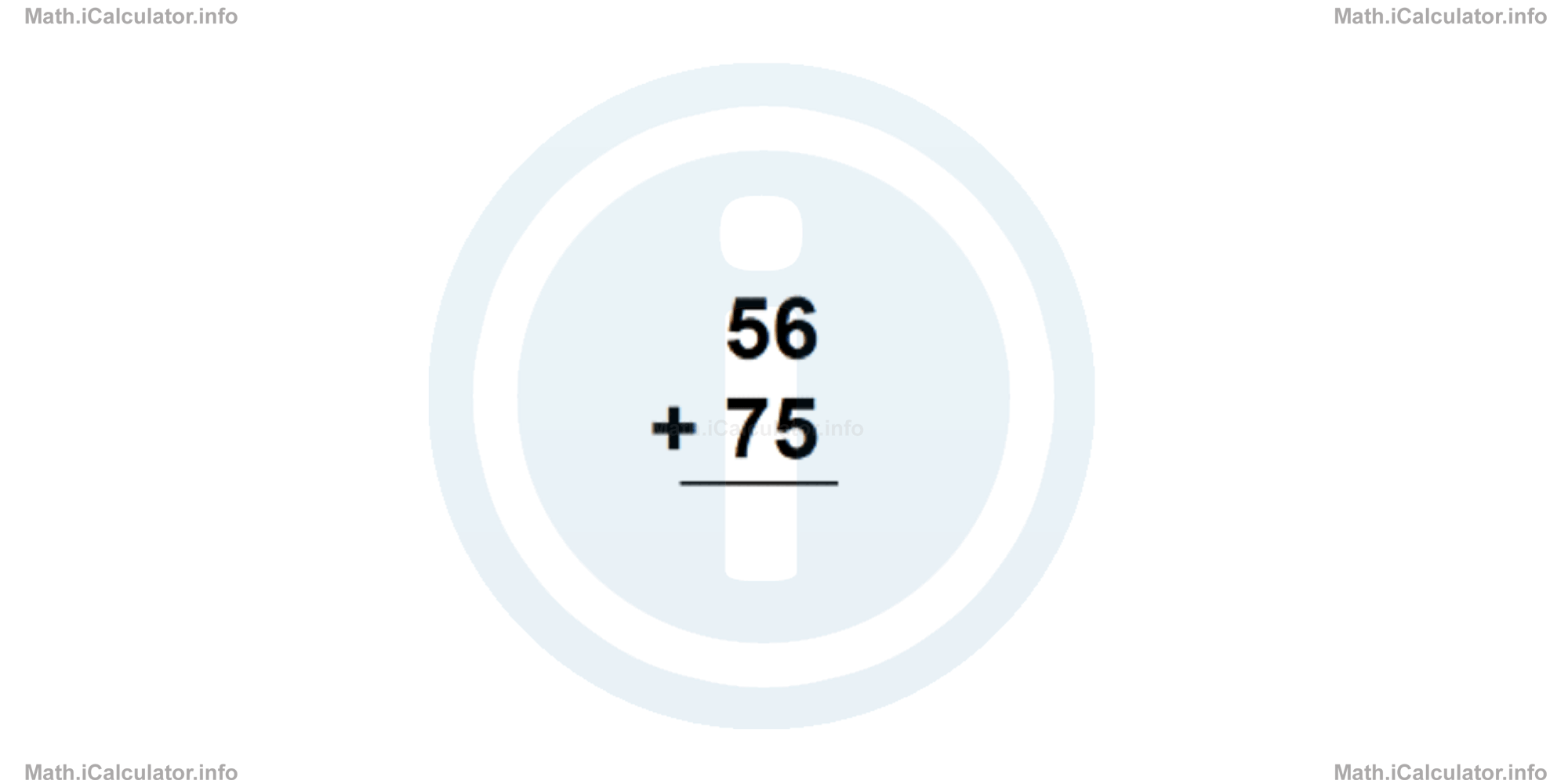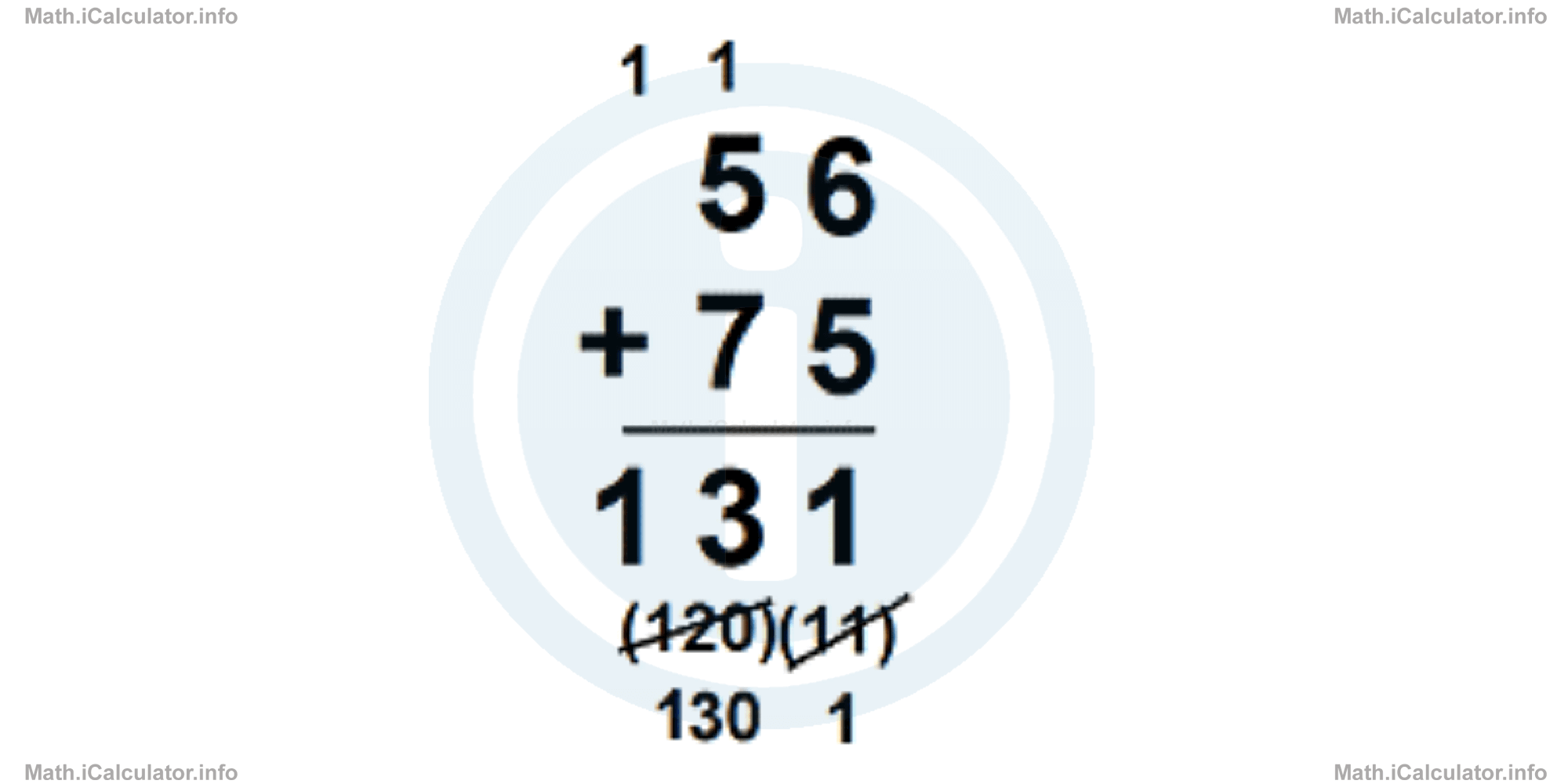Menu
Math Lesson 1.3.1 - Addition
Please provide a rating, it takes seconds and helps us to keep this resource free for all to use
Welcome to our Math lesson on Addition, this is the first lesson of our suite of math lessons covering the topic of Operations with Numbers and Properties of Operations, you can find links to the other lessons within this tutorial and access additional Math learning resources below this lesson.
Addition
Addition is a mathematical operation that shows two or more numbers added together. The result of addition is called a sum and each element (number) participating in an addition operation is called addend.
The operation of addition is expressed through the plus (+) symbol.
For example, the expression 12 + 9 = 21 means that 9 is added to 12 and the sum is 21. 12 and 9 are the addends and 21 is the sum of this addition.
An addition expressed on the number line means a shift due right.

Properties of addition
Addition as a mathematical operation has the following properties:
1. Closure property of addition
In simple word, this property states that if two (or more) addends belong to a given number set, the sum also belongs to this set.
For example, in 4 + 7 = 11 both addends are natural numbers. As a results, the sum is also a natural number.
Another example: (-4) + (-2) = (-6). Both addends are integers, hence the sum is also an integer.
Symbolically, we write the closure property of addition as
a + b = c a ϵ X and b ϵ X then c ϵ X
where a and b are the addends, c is the sum, X is the given set of numbers which a and b belong to. The symbol "ϵ" means "is an element of the set..."
2. Commutative property of addition
According to this property, when we switch the place of addends the sum does not change. For example, since 4 + 9 = 13, then 9 + 4 = 13 as well. Commutative property is often used when there are more than two addends in an addition and we change the place to two of them to make the operations easier, for example to obtain partial sums, which end with any zero. Let's consider a couple of examples to clarify this point.
Example 1
Find the sum of the following additions:
b. 329 + 213 + 121 =
Solution 1
- We switch the place to 65 and 27. Hence, we obtain 73 + 65 + 27
= 73 + 27 + 65
= 100 + 65
= 165 - Again, we switch the place of 213 and 121 to obtain a partial sum ending with zero. We have329 + 213 + 121
= 329 + 121 + 213
= 450 + 213
= 663
3. Associative property of addition
Normally, addition (but not only) is completed from left to right. We start the operations with the first two leftmost addends, then the partial sum is added to the third addend and so on. Sometimes however, it is easier or more suitable to begin calculating the partial sum with two addends that are not the leftmost ones. The total sum does not change; this property of addition is known as associative property, i.e. we associate two other addends to begin with, not necessarily the leftmost ones.
The reason for using the associative property of addition may be the same as in the previous examples, i.e. to obtain a partial sum that ends with zero for easier calculations. Let's consider an example in this regard.
Example 2
Calculate the sum of the following arithmetic sentence
Solution 2
We begin from 59 + 41 as the partial sum of these two addends is 100. We have
= 18 + (59 + 41)
= 18 + 100
= 118
4. Additive identity property
It is clear that any number added with zero gives the same number as sum. For example, 3 + 0 = 3, 15 + 0 = 15, (-6) + 0 = (-6), and so on. In other words, adding zero to any number does not change the value of this number. This is called the additive identity property of numbers.
We can write the additive property of addition in symbols as
Splitting an addend in two parts
Sometimes, it is more appropriate to split an addend in two parts to make the calculations easier. Then we can apply any of the aforementioned properties of addition to find the sum. For example, in the addition 79 + 38 we can write
= 70 + 9 + 30 + 8 (splitting)
= 70 + 30 + 9 + 8 (commutative)
= 100 + 17 (associative)
= 117
Adding numbers in columns
We can add numbers in columns for simplicity. In this case, we place the like placeholders in the same column (units below units, tens below tens and so on). Look at the figure below.

The operations are completed by adding units with units, tens with tens and so on. When the result of any single addition is more than 9, one "box" made by 10 items (which we write as 1), is carried to the next position on the right. We write

More Operations with Numbers and Properties of Operations Lessons and Learning Resources
Whats next?
Enjoy the "Addition" math lesson? People who liked the "Operations with Numbers and Properties of Operations lesson found the following resources useful:
- Addition Feedback. Helps other - Leave a rating for this addition (see below)
- Arithmetic Math tutorial: Operations with Numbers and Properties of Operations. Read the Operations with Numbers and Properties of Operations math tutorial and build your math knowledge of Arithmetic
- Arithmetic Video tutorial: Operations with Numbers and Properties of Operations. Watch or listen to the Operations with Numbers and Properties of Operations video tutorial, a useful way to help you revise when travelling to and from school/college
- Arithmetic Revision Notes: Operations with Numbers and Properties of Operations. Print the notes so you can revise the key points covered in the math tutorial for Operations with Numbers and Properties of Operations
- Arithmetic Practice Questions: Operations with Numbers and Properties of Operations. Test and improve your knowledge of Operations with Numbers and Properties of Operations with example questins and answers
- Check your calculations for Arithmetic questions with our excellent Arithmetic calculators which contain full equations and calculations clearly displayed line by line. See the Arithmetic Calculators by iCalculator™ below.
- Continuing learning arithmetic - read our next math tutorial: Order of Operations and PEMDAS Rule
Help others Learning Math just like you
Please provide a rating, it takes seconds and helps us to keep this resource free for all to use
We hope you found this Math tutorial "Operations with Numbers and Properties of Operations" useful. If you did it would be great if you could spare the time to rate this math tutorial (simply click on the number of stars that match your assessment of this math learning aide) and/or share on social media, this helps us identify popular tutorials and calculators and expand our free learning resources to support our users around the world have free access to expand their knowledge of math and other disciplines.
Arithmetic Calculators by iCalculator™
- Arithmetic Expressions Calculator
- Decimal Hexadecimal Number Calculator
- Hexadecimal Decimal Number Calculator
- Hindu Arabic To Roman Numbers Converter
- Identifying Factors Number Calculator
- Least Common Multiple And Greatest Common Factor Calculator
- Prime Numbers Identifier
- Greatest Common Divisor Calculator
- Number Format Converter
- Math Powers
- Square Root Calculator
- Exponents Calculator
- Binary Calculator
- Binary To Decimal Calculator
- Common Factors
- Imperial Converter
- Imperial To Metric Converter
- Length Converter
- Metric Converter
- Metric Units Conversion Calculator
- Roman Numerals Converter
- Rounding Numbers Calculator
- Round To Nearest Multiple Calculator
- Sig Fig Calculator
- Unit Rate Calculator
- Weight Conversion Calculator